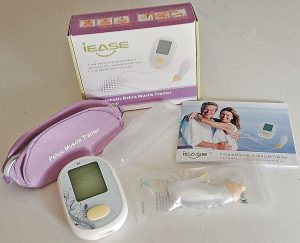Biofeedback is a method that educates individuals how to handle their body's functionality, such as soul rate, muscle mass stress, and skin temp. This technique has been made use of for a number of decades in the clinical field to aid individuals handle with different health conditions, consisting of pain monitoring. Psychophysiological feedback for discomfort administration includes making use of monitoring tools to track the physical body's reactions to different stimuli and using this information to produce self-awareness and command over one's bodily response. In this post, we are going to talk about the techniques and perks of making use of psychophysiological feedback for pain management.
Techniques of Biofeedback for Pain Management
1. Electromyography (EMG) - This procedure entails positioning electrodes on the skin layer over muscles that are stressful due to stress and anxiety or personal injury. The electrodes determine electrical indicators made through muscle tightenings that are not visible or felt by the individual experiencing them. By checking these signals through a screen display screen or audio reviews, patients can learn how to release tension in their muscles willingly.
2. Thermic Biofeedback - This approach gauges modifications in temperature level on details places of the body such as palms or feets. Sensing units placed on these locations check temperature adjustments as a result of stress or relaxation workout. Patients can easily make use of this comments to discover how to regulate their body system temperature and boost blood stream circulation.
3. Soul Rate Variability (HRV) - This approach measures variants between heart beats and gives idea into the functionality of the autonomic tense device (ANS). Through managing breathing patterns, clients may modify their HRV reactions by means of biofeedback training.
Perks of Utilizing Biofeedback for Pain Management
1. Non-invasive Technique: Unlike various other approaches utilized in ache control such as surgical procedure or medicine intake, psychophysiological feedback is non-invasive and does not need any type of medication consumption.
2. Cost-effective: Psychophysiological feedback therapy sets you back a lot less than various other typical therapy procedures like surgical operation, helping make it even more obtainable for patients who might not be capable to manage expensive treatments.
3.Effective as a Complementary Therapy: Psychophysiological feedback is usually made use of as a corresponding therapy together with various other discomfort control techniques. It can easily be used in combination with medication, exercise, and physical treatment to help manage chronic pain.

4. Enhanced self-awareness: Biofeedback training makes it possible for individuals to come to be even more knowledgeable of their physical reaction to stress factors and pain. With self-awareness, clients can easily identify triggers that cause pain and discover how to manage their action by means of relaxation procedures.
5. No Side results: Biofeedback has no side effects, making it ideal for individuals who may be vulnerable or hypersensitive to medication.
In conclusion, biofeedback is a non-invasive procedure that has been presented to be efficient in dealing with constant discomfort. The use of specialized display tools helps individuals control their body's responses and get additional control over their bodily reaction to stress factors and pain triggers. Also, the cost-effectiveness of psychophysiological feedback helps make it available for those who might not possess the financial means for traditional procedure techniques like surgical procedure or drug consumption. Along with
Answers Shown Here , psychophysiological feedback can easily be utilized as an reliable corresponding treatment along with various other therapy approaches for dealing with severe ache.
UNDER MAINTENANCE

